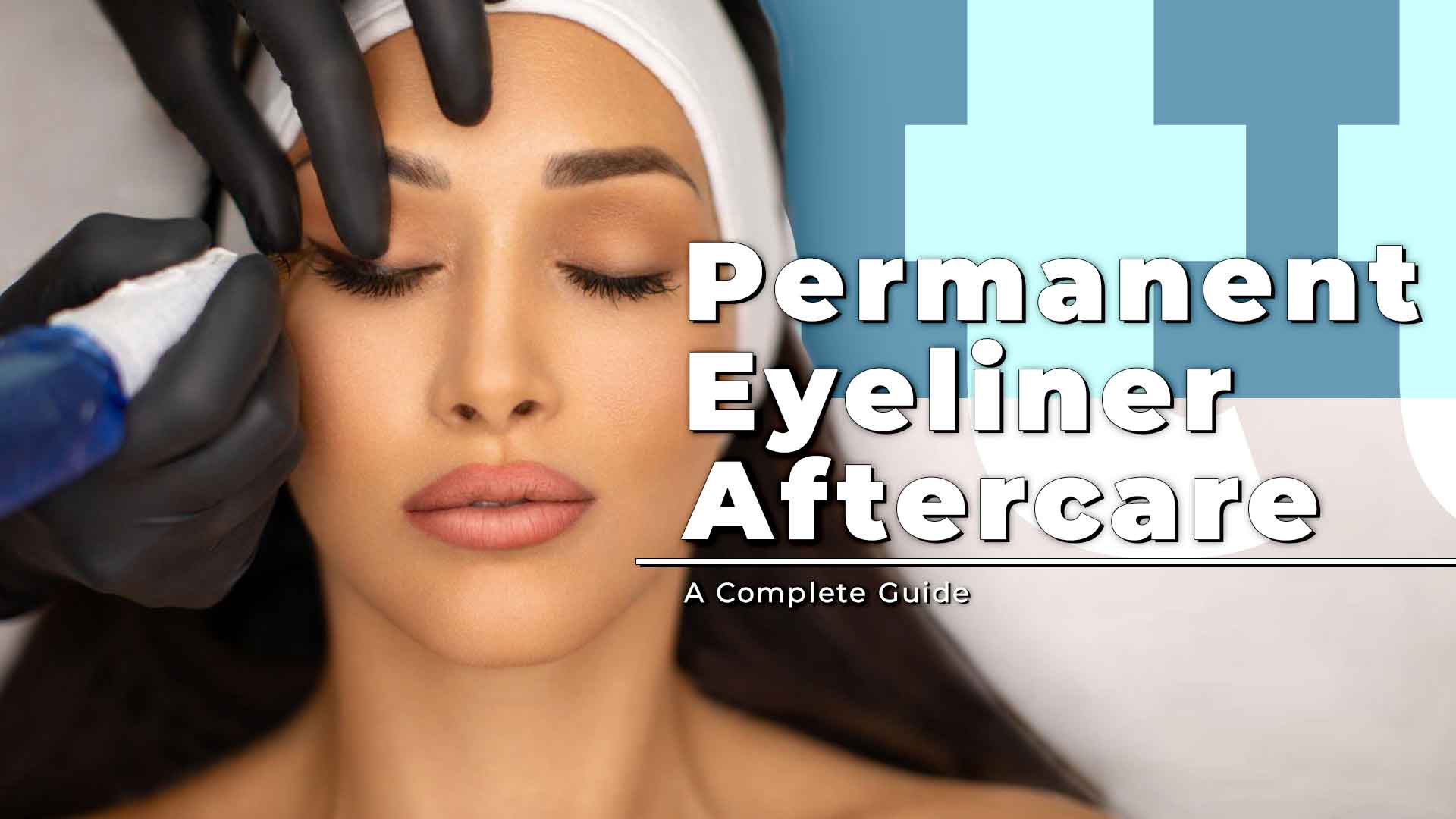Permanent eyeliner is a type of cosmetic tattooing that enhances the look of the eyes. Aftercare is crucial to ensure proper healing and to achieve the desired result. With proper aftercare, the permanent eyeliner should heal well and last for several years.
Having someone draw on our cat eyes would be a dream come true, but since that’s not possible, permanent eyeliner is the next best thing. If you have a shaky hand or you’re tired of fixing smudges every evening, then permanent eyeliner can be the perfect long-term solution to your eyeliner troubles. It’s one of the many permanent makeup services that can keep your face looking camera-ready all the time.
Aftercare for permanent eyeliner is the most crucial part of the process. Although eyeliner is the easiest type of permanent makeup to heal, you cannot afford to be complacent. Failure to follow your makeup artist’s instructions can put you at risk of infections. But don’t worry, we will guide you through the general healing stages, healing methods, and everything else you need to know about permanent eyeliner aftercare before booking your appointment.
The healing process of permanent eyeliner is considered the simplest among all types of permanent makeup. As long as you have chosen a skilled artist and have good health, you can expect a quick, easy, and safe recovery. This article will discuss the appearance of your permanent eyeliner during the healing phase, as well as the most popular methods of aftercare.
How To Prep For An Eyeliner Tattoo?
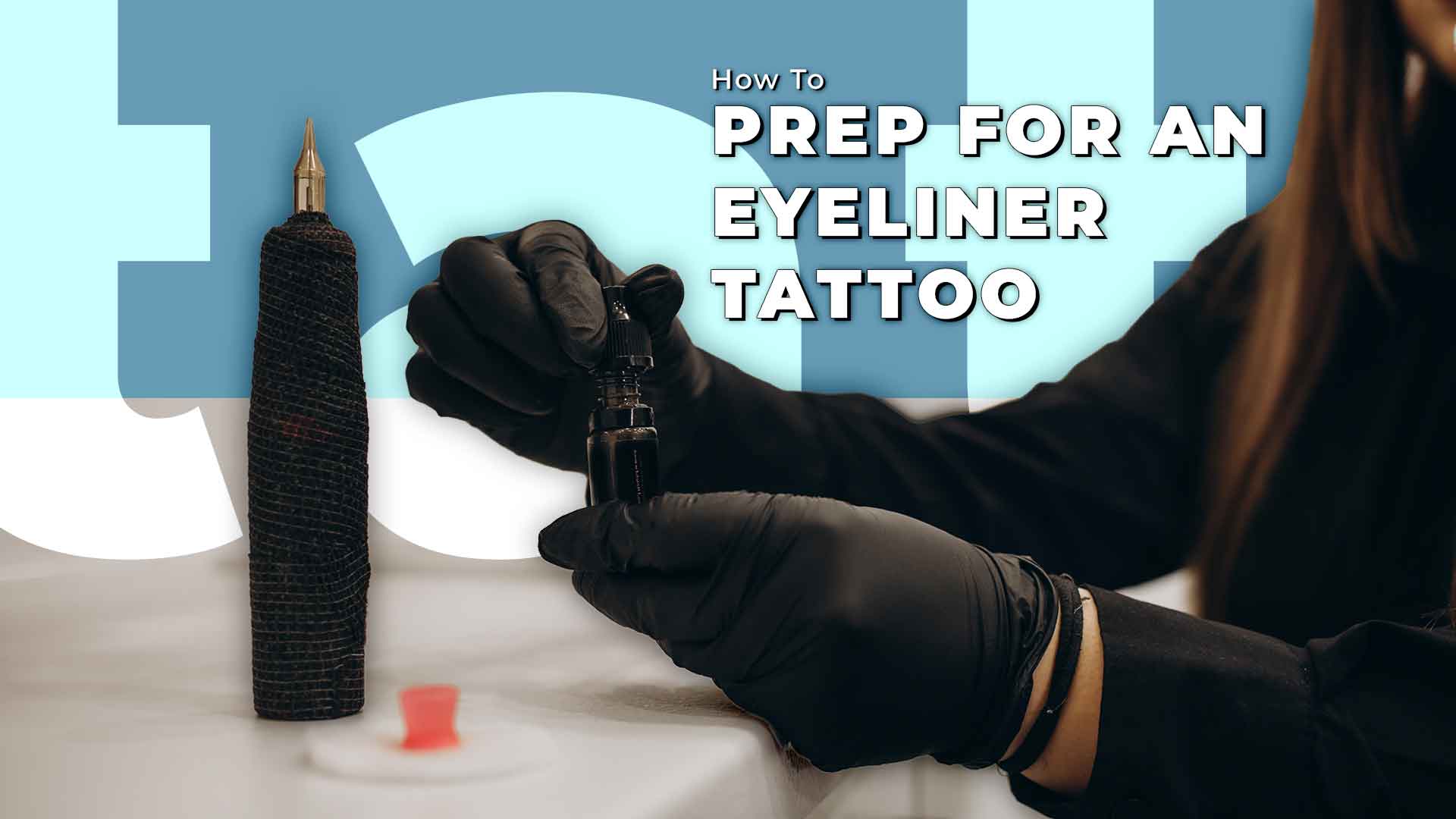
These are guidelines for preparing for an eyeliner tattoo:
- Do not wear mascara on the day of the procedure.
- Ensure that your eyes are free of makeup and moisturizer.
- Bring sunglasses to wear after the procedure as your eyes may be light sensitive.
- If you wear contact lenses, remove them before the procedure.
- It is advisable to have a ride home after the procedure if you are sensitive to light.
- Avoid lash tinting for two weeks before the procedure. Do not dye or perm lashes for 10 days before.
- If you have had Lasik or Cataract Surgery, get medical clearance from your physician.
- Remove eyelash extensions one week before the eyeliner procedure.
- Do not have botox injections in the eye area two weeks before the procedure.
- The skin must be free of all irritations, including blemishes, eczema, and psoriasis.
- You must not be on Accutane medication for one year before getting a Permanent Cosmetic Tattoo.
- Discontinue the use of any anti-aging, skin brightening, or anti-acne skincare products, particularly those that contain Alpha Hydroxy (AHA), Vitamin A, Retinol, for at least 30 days before your appointment. Once your tattoo has healed under the skin surface (approximately 6 weeks following your final session), you may resume your usual skincare routine.
- Avoid scheduling any facials, microdermabrasion, microneedling, peels
What To Expect After Permanent Eyeliner: Healing Stages
Although everyone’s skin reacts differently to the healing process, you can expect to experience the same general stages after your permanent eyeliner procedure. However, your healing process may differ slightly from someone else’s. We will discuss each phase in detail and provide you with an overview of what you can expect during each stage.
Day 1: You’ll be thrilled with your new eyeliner! The color of your eyeliner will be about 30% darker than its final shade and it will appear slightly larger. This is normal due to color oxidation and a small amount of swelling. You can go about your day as usual, and it’s unlikely that anyone will notice your new eyeliner, except for those who know you well.
Days 2-3: Your eyeliner color will darken temporarily as the pigment oxidizes, and thin scabs will form. You may wake up slightly puffy, but you can alleviate this by sleeping with your head elevated or applying a cool compress. Your eyeliner may feel tight and dry but not painful.
Days 3-5: Your eyeliner will begin to flake, and the scabs will fall off naturally. Allow the healing process to take its course. Once the flaking has stopped, the color of your eyeliner may appear lighter than it will eventually heal. However, this is just temporary, and your freshly healed skin is concealing the true color underneath. Over the next few weeks, your eyeliner color will deepen.
Days 6-10: During this period, the color of your eyeliner will start to become more consistent and resemble its final shade. Your aftercare routine at this point will depend on your makeup artist’s instructions and how well your skin is healing.
Since the healing process varies for each person, it is possible that flaking may persist beyond the fifth day or end much sooner. Pay attention to your body and be mindful of any warning signs. If you experience any discomfort or suspect an infection, seek medical attention immediately.
Day 42: Your eyeliner is fully healed after six weeks.
You can now return for your follow-up appointment. Any adjustments, such as darkening the color or changing the shape, can be made during this visit.
Permanent Eyeliner Aftercare: Types Of Healing
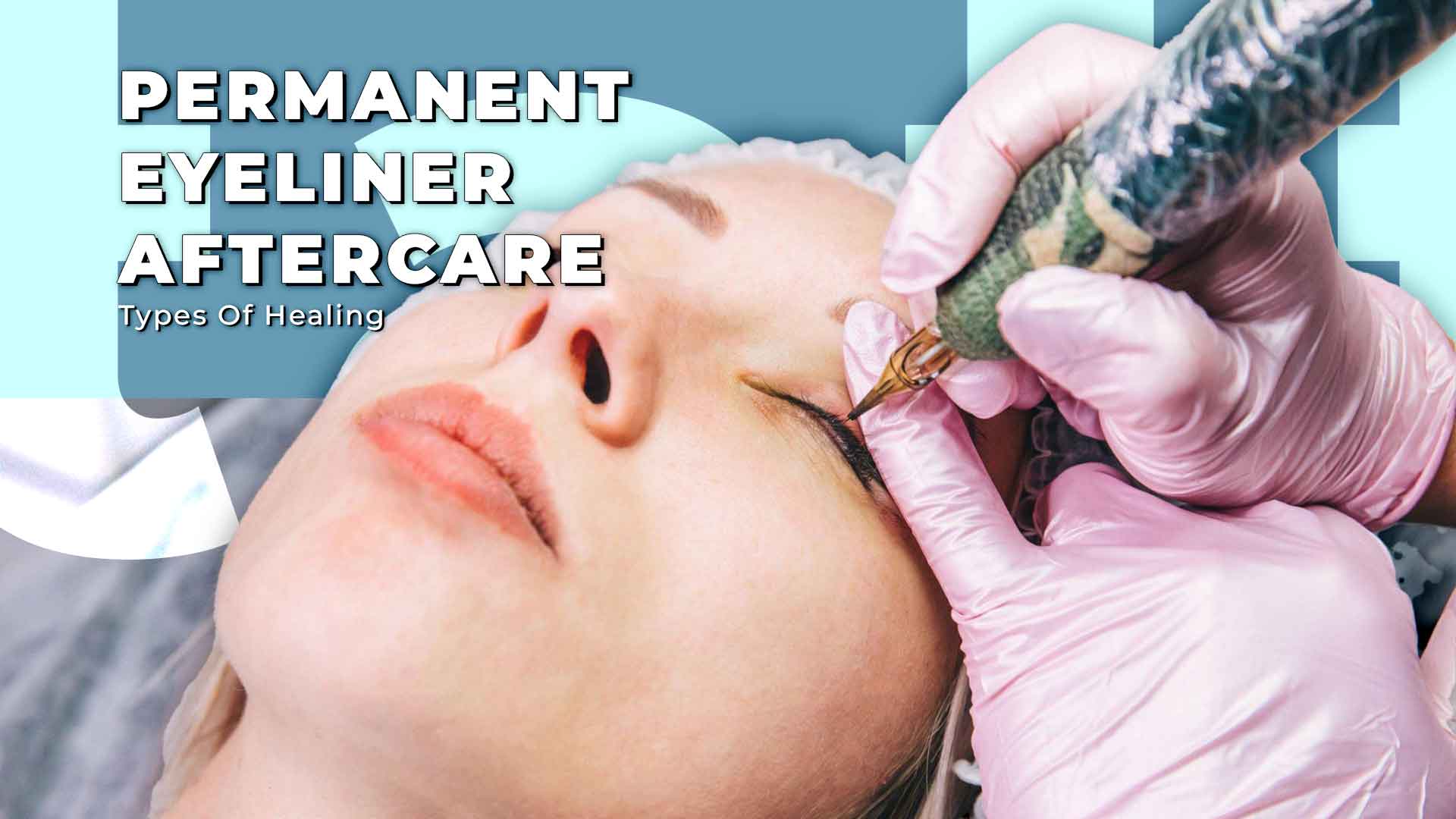
Different aftercare methods exist for permanent eyeliner, and your makeup artist will recommend what they think works best for your skin. These methods include dry healing, wet healing, and combination healing, and they are often used together to achieve the best results. Read on to learn more about each method.
- Dry Healing
Dry healing was the primary aftercare method before wet healing became popular. This method works well for those with oily skin. During the first few days, you’ll need to clean the treated area several times a day using a damp cotton pad or swab to blot away lymph and dust. Some artists recommend only removing excess fluids to prevent excess moisture. The goal is to keep the area dry for the remainder of the healing period, allowing any scabs to fall off naturally. This method is convenient and requires little effort, but scabbing and uneven color are possible outcomes.
- Wet Healing
Wet healing is now widely recommended by makeup artists. You’ll need to clean the treated area several times a day using a gentle cleanser or water, then apply a healing gel recommended by your makeup artist. Your artist will advise you on how often to clean the area and how much gel to apply. Unlike dry healing, this method prevents scabbing and produces an even color. However, it requires more effort and supplies, and you may need to keep your aftercare supplies with you throughout the day.
- Combination Healing
Combination healing combines aspects of wet and dry healing. During the first few days, the area is kept dry except when being cleaned. After that, the area is cleaned and healing gel is applied as directed by the artist for about a week.
Eyeliner Tattoo Post-Care
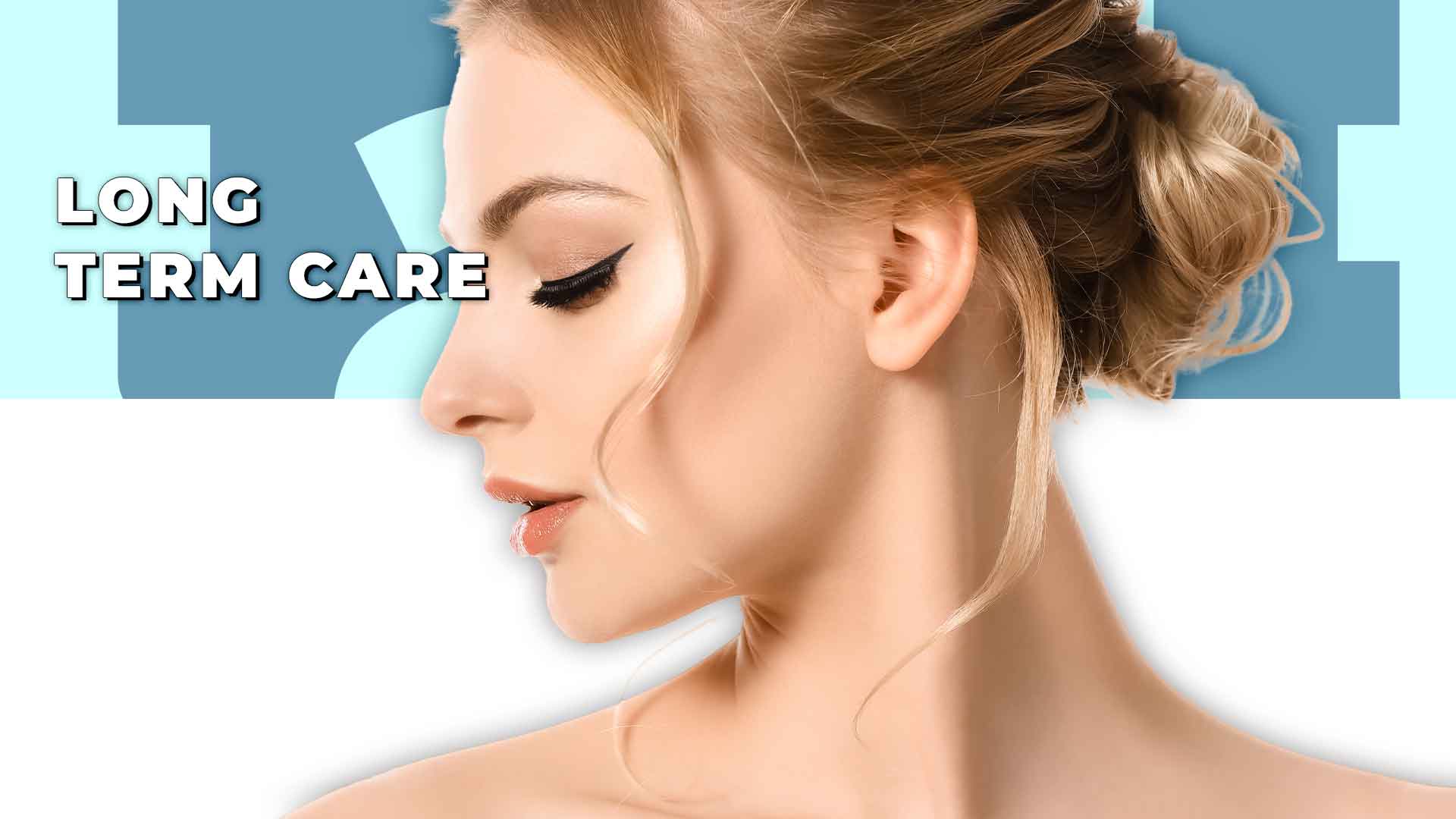
The typical healing period for permanent eyeliner is 5 to 7 days. During this time, you should take certain precautions to ensure proper healing and minimize the risk of infection. When showering, tilt your head backwards to avoid getting shampoo or conditioner on the treated area. You can use the ointment or aquaphor provided to cover the eyeliner, but do not let water or sweat get on the area for at least 10 days. You can use oil-free wipes to clean your face, but avoid the eye area.
It’s important to follow pre-care instructions to prevent bleeding and skin sensitivities during the procedure, which could dilute and expel the pigment color and lead to poor results.
- Clean the treated area regularly as per the recommended schedule to prevent infections and to allow the area to breathe.
- Use the healing gel as directed by your artist.
- To reduce swelling, use disposable ice packs and sleep with your head slightly elevated for the first few days.
- Wear sunglasses or a hat when going outside to shield your eyes from the sun.
- To avoid contamination from old makeup, use new eye makeup when you are ready to wear it.
- Change your pillowcase to reduce the risk of infection.
- If possible, get new contact lenses to avoid infection.
- Avoid direct water, cleaners, soaps, heavy creams, contact lenses, mascara, and any makeup for 10 days.
- Don’t use an eyelash curler, saline eye drops or wash, or rub, pick, or scratch the area as it may lead to uneven healing and infection.
- Avoid direct sun exposure, tanning, heavy sweating, exercise, sports, sauna, swimming, steam rooms, jacuzzi, and long hot showers for 10 days.
- Avoid using skincare or cosmetics, exfoliants, acids, and Vitamin A on or around the tattooed area for 30 days.
- Use a fresh pillowcase and don’t sleep on your face for the first 10 days.
- Don’t schedule facials, microdermabrasion, microneedling, peels, or laser treatments for at least 4 weeks.
- Avoid drinking alcohol excessively and driving in open-air vehicles. Don’t perform heavy household cleaning tasks that may expose the area to bacteria.
After the healing process, your eyeliner may appear lighter in color due to natural skin regeneration. Some areas may look uneven or patchy, which is normal. A complimentary follow-up session is included after 6-12 weeks from the initial session to fine-tune the results. Keep in mind that healed results vary per individual client, and additional sessions may be required to obtain optimal results.
Following proper post-care instructions is crucial for achieving the best results, and the healing time of the procedure depends on factors such as your body’s regeneration, age, immune system, and lifestyle. If you experience pain, you can take over-the-counter Tylenol.
Long Term Care
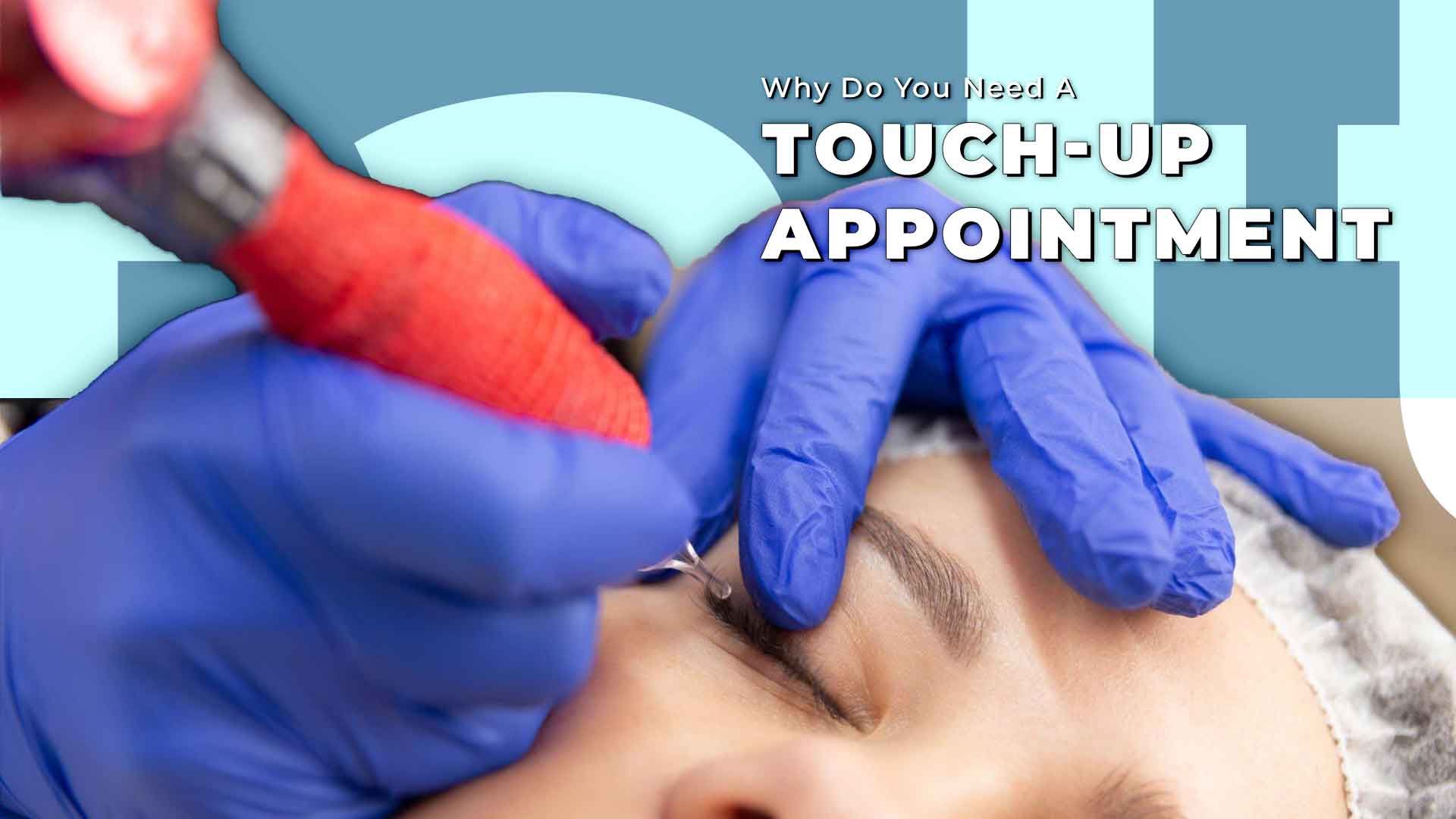
When you get a cosmetic tattoo, you can expect it to last anywhere between 3 to 5 years, depending on various factors such as your skin type, sun exposure, pigment color used, and more. However, to maintain its shape and color depth, you will need to schedule touch-up appointments regularly. We recommend scheduling one touch-up session each year for the best results.
It’s important to avoid certain things that can cause your cosmetic tattoo to fade prematurely. For example, using eye drops or other eye preparations regularly, exposure to the sun or tanning beds, chemical exfoliants, heavy creams, and undergoing certain laser procedures or an MRI scan can all contribute to fading.
You may also need to adjust your makeup routine to achieve your desired look post-tattoo. And if you plan to use Retin-A, hydroquinone, or other rapid skin exfoliation products, it’s best to avoid using them on or near the tattooed area.
Using chemical peels, acid peels, lightening or brightening products that target hyper-pigmentation near the tattooed area can also cause premature fading. Similarly, exfoliating cleansers, scrubs, and cleansers with acne-fighting ingredients can cause rapid exfoliation of the skin, increasing the odds of fading.
What Should You Do If Your Eyelids Are Stuck Together?
In case your eyelids become stuck together, you can carefully separate them by gently dabbing with a wet cotton swab or washcloth. Although it is normal to experience some crusting during the healing process, this should not occur regularly. If you have any doubts or worries, it is advisable to seek advice from a healthcare professional.
Why Do You Need A Touch-Up Appointment?
A touch-up appointment serves as an opportunity for your artist to correct any pigment that may have flaked off and to make any necessary adjustments to the shape of your eyeliner. This appointment takes place after your eyeliner has fully healed, allowing your artist to see the final result and giving you the chance to raise any concerns or request changes. It’s important to follow the aftercare advice provided by your makeup artist as it will be uniquely tailored to you and your situation.
Permanent eyeliner and lip blushing are cosmetic tattoo procedures that are performed around sensitive areas, so it’s crucial to seek out an experienced artist to ensure a safe procedure. A skilled artist will also provide you with tips and guidance to help you navigate the healing process. You can find trusted beauty experts in your area by browsing our community.

